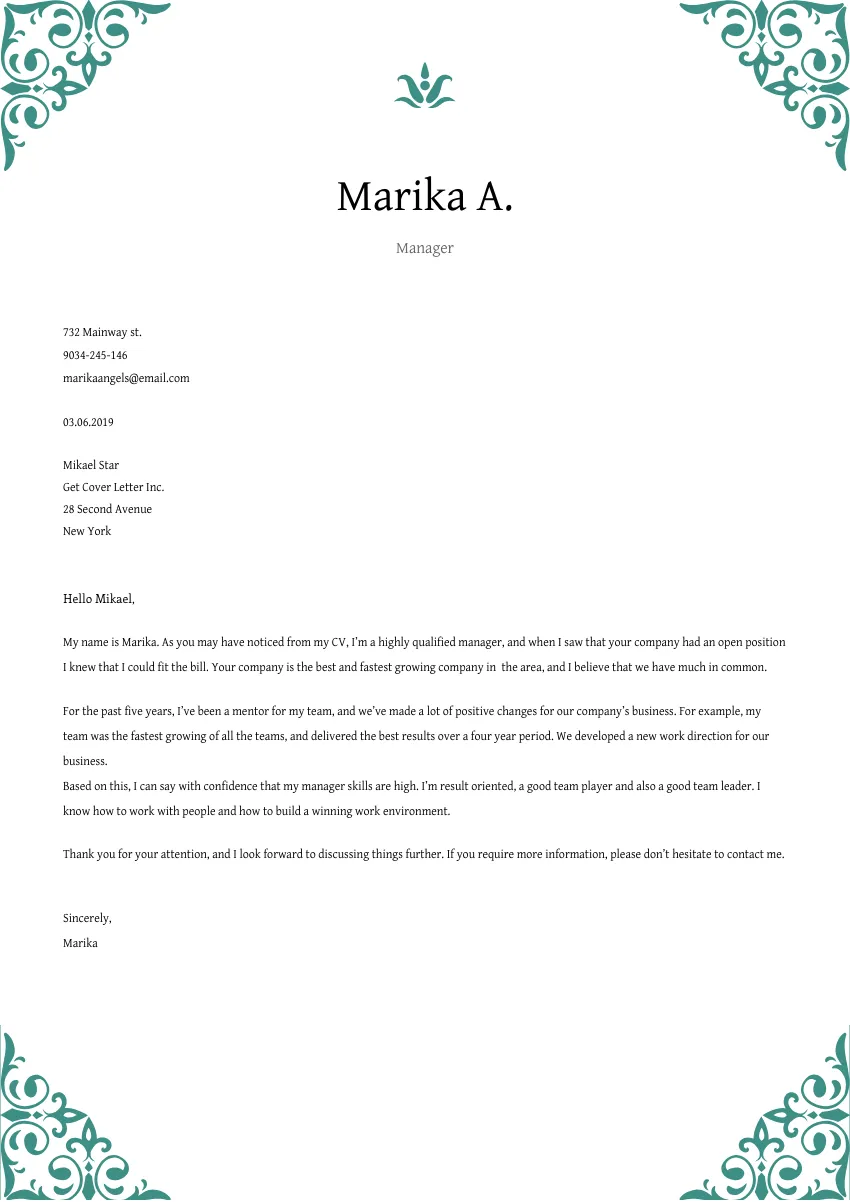The Power of a Great Construction Manager Cover Letter
In the competitive world of construction management, a compelling cover letter is your first chance to make a lasting impression. It’s more than just a formality; it’s a crucial tool to showcase your skills, experience, and personality to potential employers. A well-crafted cover letter complements your resume, providing context and demonstrating your genuine interest in the role and the company. It gives you the opportunity to expand on your qualifications and explain how your unique abilities align with the specific requirements of the job, setting you apart from other applicants. The cover letter is your voice, allowing you to articulate your career aspirations and illustrate why you’re the ideal candidate for the position, ultimately increasing your chances of landing an interview. Imagine your cover letter as the blueprint to your interview.
Key Elements to Include in Your Construction Manager Cover Letter
A successful construction manager cover letter should include essential components to effectively communicate your value proposition. Start by clearly stating the position you’re applying for and where you saw the job posting. Next, provide a brief but impactful overview of your qualifications, emphasizing key skills and experiences relevant to the role. Always customize your cover letter to the specific job description, highlighting how your experience aligns with the employer’s needs. This demonstrates that you’ve taken the time to understand the company and the position. Use quantifiable achievements to showcase your impact in previous roles, such as project completion rates, budget management successes, or improvements in safety records. Conclude with a strong call to action, expressing your enthusiasm for the opportunity and your availability for an interview.
Your Contact Information and Personal Details
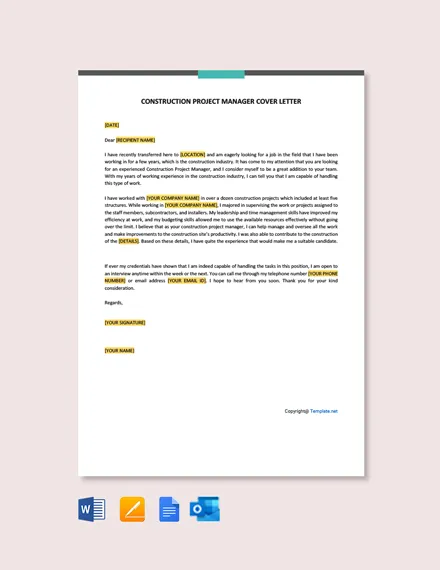
Begin your cover letter with your contact information, including your full name, phone number, email address, and optionally, your LinkedIn profile URL. This ensures that the hiring manager can easily reach you. Make sure this information is accurate and up-to-date. Below your contact details, include the date and the hiring manager’s name and title (if you know it), along with the company’s address. Addressing the letter to a specific person demonstrates that you’ve done your research and shows your attention to detail. If you’re unsure of the hiring manager’s name, research the company’s website or LinkedIn profiles to find the appropriate contact. Personalizing the letter, when possible, will make it more impactful and show that you’re genuinely interested in the opportunity. Proper formatting here sets a professional tone.
Highlighting Your Construction Management Skills and Experience
Your cover letter is the perfect place to spotlight your construction management skills. Focus on the key skills mentioned in the job description. These may include project planning, budgeting, team leadership, risk management, and quality control. Provide concrete examples of how you’ve successfully utilized these skills in your previous roles. For example, if the job description emphasizes project planning, describe a project where you successfully managed timelines, resources, and budgets from inception to completion. If the role requires strong leadership, detail how you motivated and managed a team, resolved conflicts, and fostered a collaborative work environment. Tailor your content to reflect the skills that the employer is seeking, using specific achievements to illustrate your expertise and abilities, ensuring your application is directly relevant to the role.
Quantifying Your Achievements as a Construction Manager
One of the most effective ways to demonstrate your value is by quantifying your achievements. Instead of simply stating that you ‘managed projects,’ provide specific metrics. For instance, mention the number of projects you completed on time and within budget, or the percentage by which you reduced project costs. If you’ve improved project efficiency, provide the specific percentage. Have you implemented any new safety protocols that led to a decrease in accidents? Specify the reduction rate. These quantifiable results not only highlight your accomplishments but also give the hiring manager concrete evidence of your capabilities. Use data to show how your experience translates into tangible value. For instance, include details on project size, budget management, and your impact on overall company performance. This makes your cover letter more convincing and demonstrates your ability to deliver results.
Tailoring Your Cover Letter for the Specific Job
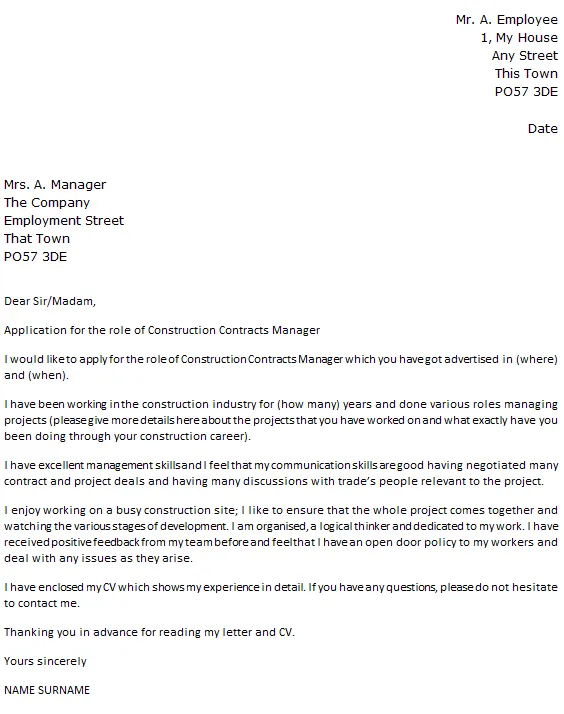
Generic cover letters rarely make a strong impression. To maximize your chances, tailor your cover letter to each specific job you apply for. Carefully review the job description and identify the key skills, experience, and qualifications the employer is seeking. Then, in your cover letter, highlight how your background aligns with those requirements. This shows that you understand the role and are genuinely interested in the opportunity. Use the company’s language and terminology when describing your skills and experiences. Mentioning specific projects or accomplishments that align with the company’s values or goals will further demonstrate your suitability. Customizing your cover letter shows that you’ve invested time and effort in researching the role and the company, making it more likely to get the hiring manager’s attention and to be considered for the position.
Example 1 Construction Project Management Expertise
In this example, you could highlight your experience in overseeing construction projects from inception to completion. Mention the size and scope of the projects you’ve managed, such as commercial buildings, residential developments, or infrastructure projects. Showcase your proficiency in project planning, scheduling, and budgeting. Describe how you effectively managed resources, coordinated subcontractors, and ensured projects were completed on time and within budget. Quantify your achievements by specifying the number of projects completed successfully, the average time and cost savings you achieved, or the improvement in project efficiency rates. Also, include how you implemented and maintained quality control standards and resolved any issues that arose during the project lifecycle, which shows your ability to handle challenges effectively. This will demonstrate your strong understanding of project management principles and your ability to deliver successful outcomes.
Example 2 Leadership and Team Management
Emphasize your leadership abilities and experience in managing construction teams. Describe how you’ve successfully led and motivated teams of various sizes and compositions, including site managers, subcontractors, and laborers. Highlight your skills in fostering collaboration, resolving conflicts, and ensuring effective communication among team members. Mention your experience in conducting performance evaluations, providing training and development opportunities, and mentoring team members. Share any instances where your leadership directly led to improved team performance, increased productivity, or reduced employee turnover. Quantify these achievements by providing metrics such as the percentage increase in team efficiency, the number of projects completed ahead of schedule, or any reductions in workplace incidents. This demonstrates your ability to build and lead high-performing teams and your impact on project success.
Example 3 Technical Proficiency and Problem-Solving
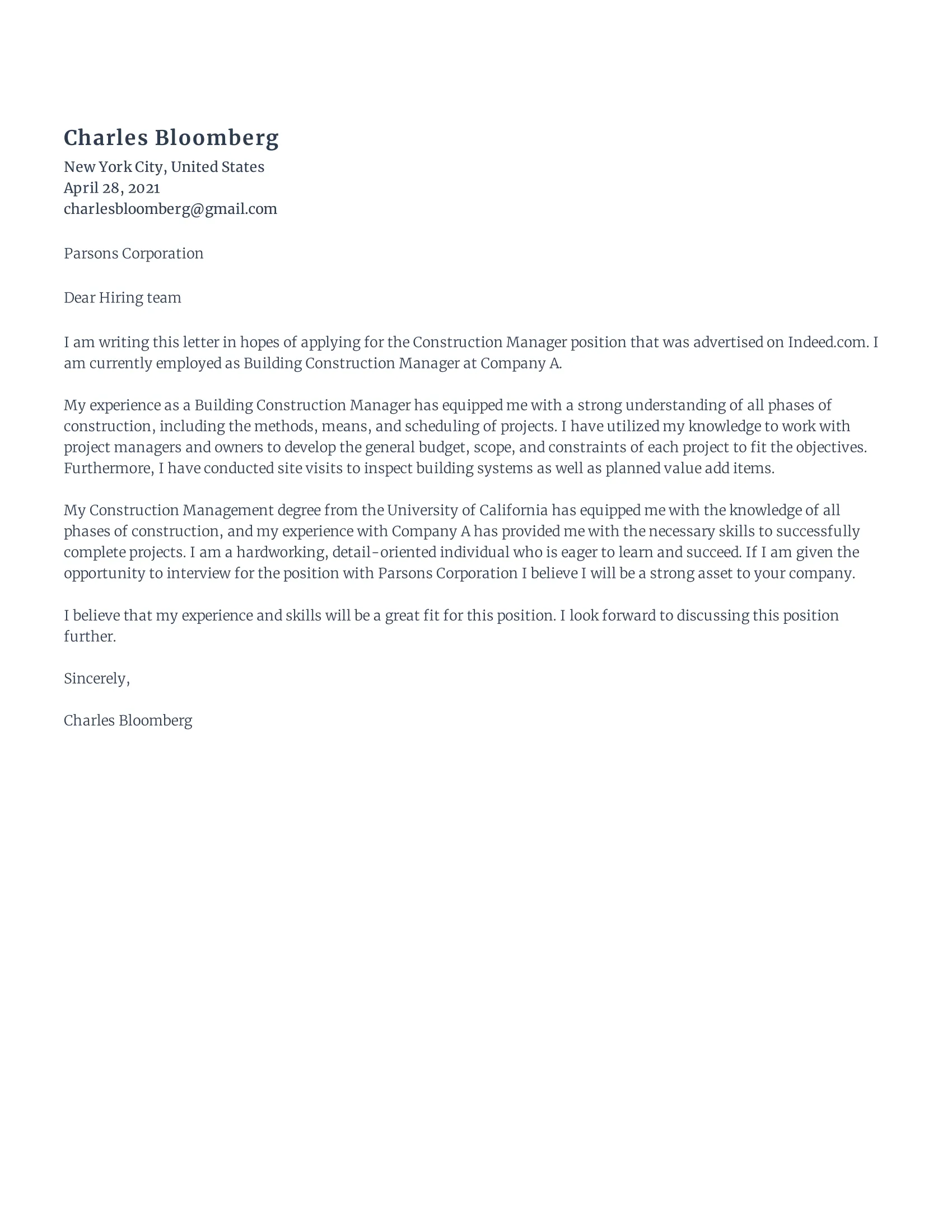
Highlight your technical skills and problem-solving abilities. Detail your proficiency in reading and interpreting blueprints, specifications, and construction documents. Mention your experience with construction software and technologies, such as project management tools, CAD software, and BIM. Provide examples of how you’ve successfully identified and resolved complex technical challenges or unexpected issues that arose during projects. Showcase your ability to think critically, analyze problems, and develop effective solutions under pressure. Quantify your accomplishments by stating the amount of time or money you saved by resolving specific issues, or the number of projects where you successfully averted potential delays or cost overruns. This demonstrates your ability to handle technical aspects effectively and your capacity to bring solutions to challenges.
Example 4 Project Planning and Execution Success
Provide specific examples of successful project planning and execution. Detail how you’ve developed and managed project schedules, budgets, and resource allocations. Describe your experience in coordinating subcontractors, managing site logistics, and ensuring compliance with regulations and safety standards. Show your ability to anticipate potential challenges and proactively develop mitigation strategies. Showcase your skills in communicating with stakeholders, managing client expectations, and delivering projects that meet or exceed their requirements. Quantify your achievements by sharing metrics such as the number of projects completed on time, the reduction in project costs, and the improvement in client satisfaction scores. This demonstrates your ability to plan and execute construction projects effectively, leading to successful outcomes.
Example 5 Safety Management and Regulatory Compliance
Emphasize your commitment to safety and regulatory compliance. Describe your experience in developing and implementing safety programs, conducting safety inspections, and ensuring compliance with all relevant regulations and standards. Share specific examples of how you’ve improved safety records or reduced workplace accidents. Highlight your knowledge of safety protocols, such as OSHA regulations, and your ability to create a safe work environment. Mention any certifications or training you have in safety management, such as OSHA 30 or other relevant credentials. Quantify your accomplishments by stating the percentage decrease in accidents, the number of safety violations avoided, or the improvement in safety performance ratings. This will showcase your dedication to safety and your ability to manage regulatory compliance.
Formatting and Design for Maximum Impact
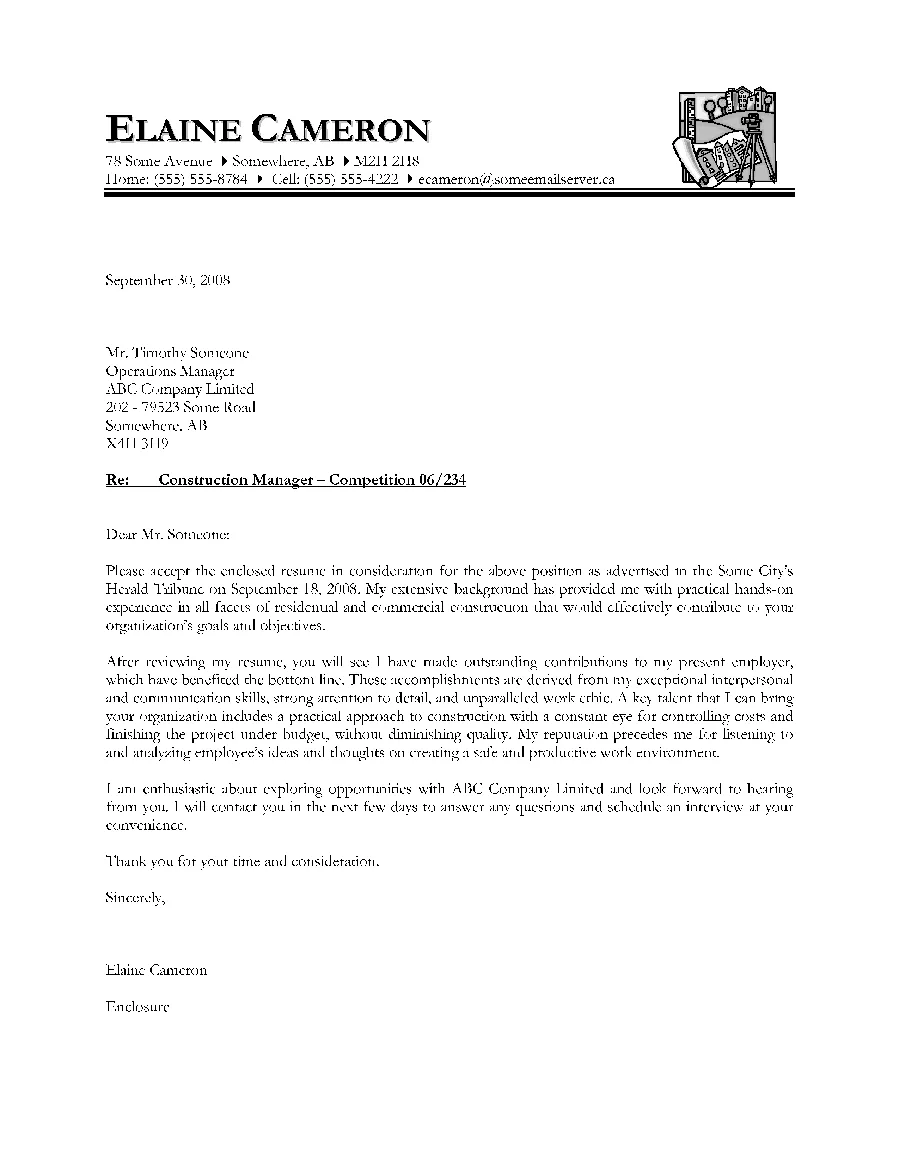
The formatting and design of your cover letter significantly impact its readability and overall impression. Use a clear and professional font, such as Arial, Calibri, or Times New Roman, with a font size between 10 and 12 points. Maintain consistent spacing and use ample white space to make the letter easy to read. Divide the content into concise paragraphs, each addressing a specific point. Use bullet points to highlight key skills or accomplishments, making them easier for the hiring manager to quickly grasp your qualifications. Ensure your letter has a professional layout, with aligned text and clear headings to separate different sections. Proofread meticulously for any grammatical errors or typos, and consider having a second person review it to catch any mistakes you may have missed. A well-formatted cover letter conveys professionalism and attention to detail.
Proofreading and Editing Your Cover Letter
Proofreading and editing are critical steps in finalizing your cover letter. Errors in grammar, spelling, or punctuation can undermine your credibility and diminish your chances of success. Before submitting your cover letter, carefully review it for any mistakes. Read it aloud to yourself to catch any awkward phrasing or sentences that don’t flow well. Use a grammar and spell-checking tool, but remember that these tools are not foolproof and can miss certain errors. Have someone else review your cover letter, as a fresh pair of eyes can often spot mistakes you may have overlooked. Make sure the tone of your cover letter is professional and consistent with the role you are applying for. Ensure the letter is concise and to the point, as hiring managers often have limited time to review applications. Taking the time to proofread and edit your cover letter will ensure that it’s polished, professional, and accurately reflects your skills and experience.
Final Thoughts and Call to Action
In your concluding paragraph, reiterate your interest in the position and the company. Briefly summarize your key qualifications and why you believe you are a great fit for the role. Reiterate your enthusiasm and express your availability for an interview, providing your contact information again for convenience. Thank the hiring manager for their time and consideration. A strong call to action shows your proactive approach and desire to move forward in the hiring process. This is your opportunity to leave a lasting impression, reinforcing your commitment to the role and the company. Your cover letter should be a clear statement of your value, demonstrating why you should be considered. Remember, the cover letter is the first step in the hiring process; make sure it’s a great one.
